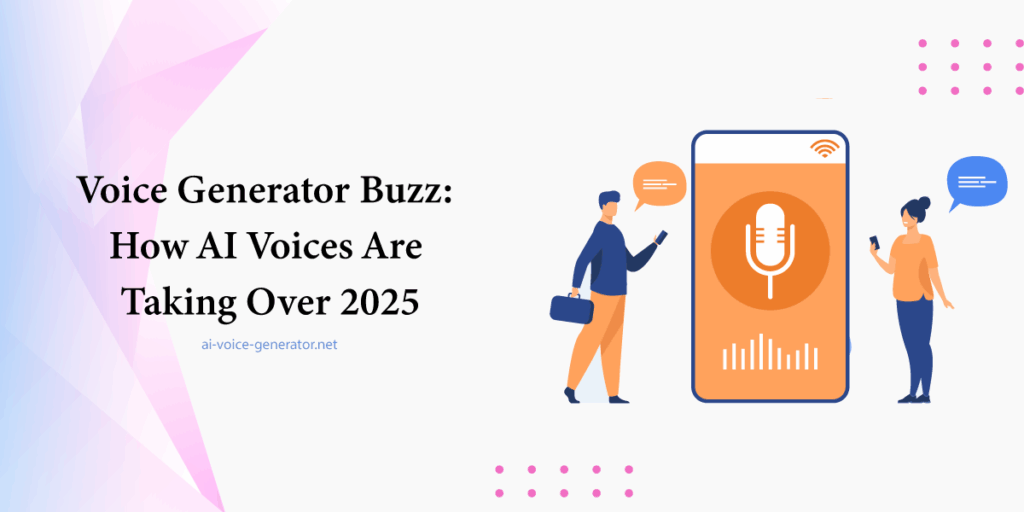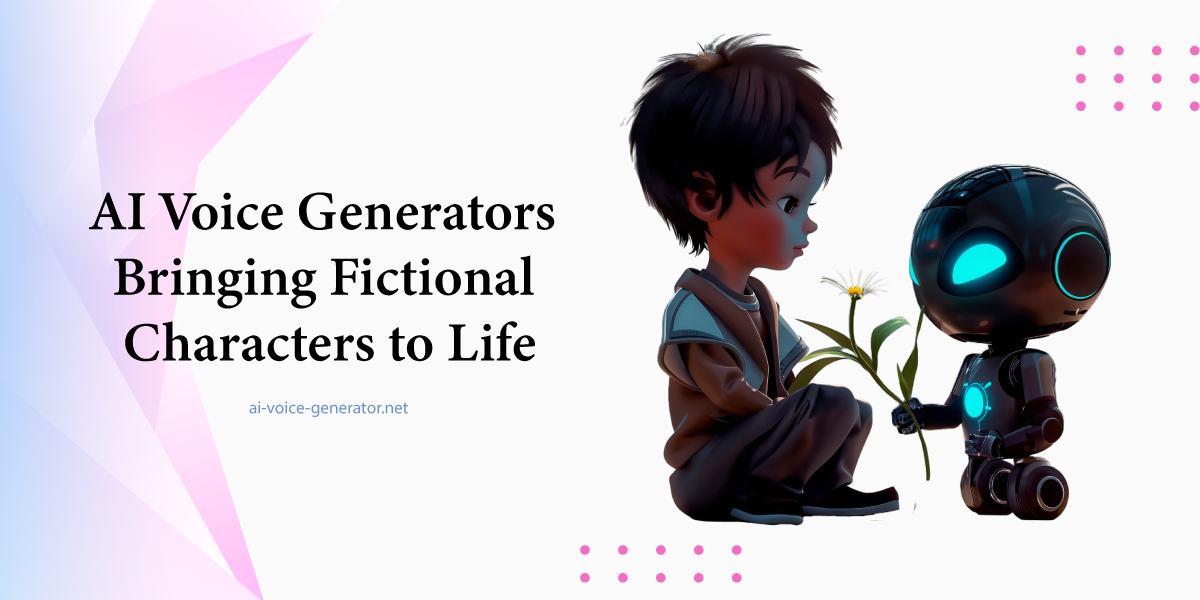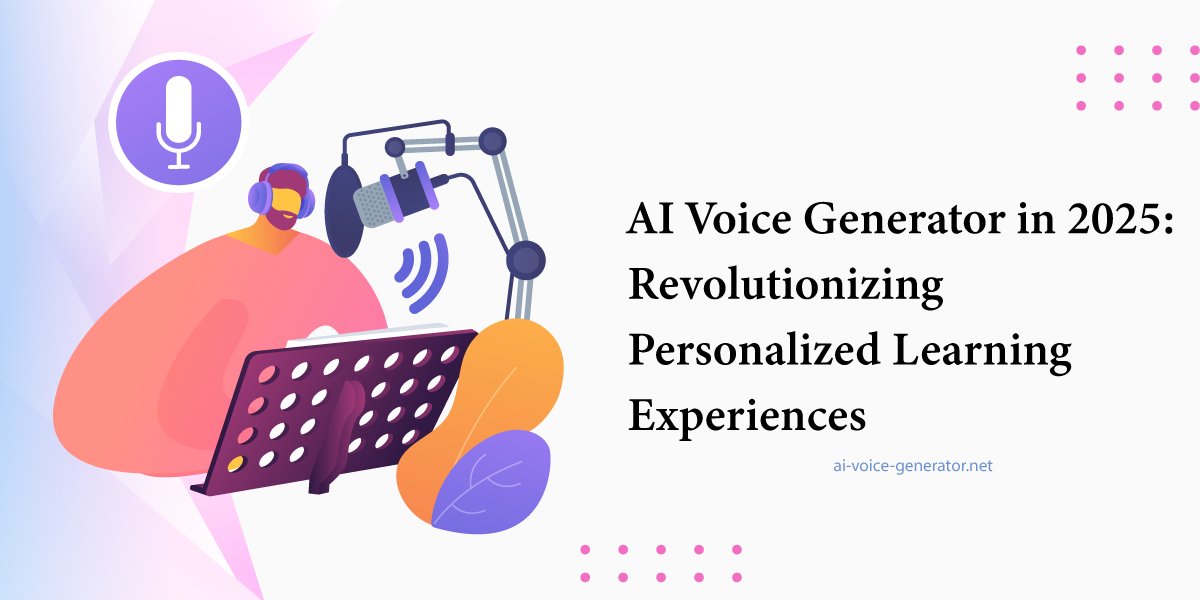
Voice Generator Buzz: How AI Voices Are Taking Over 2025
In 2025, the landscape of audio content is undergoing a significant transformation. The advent of AI voice technology is reshaping how we interact with digital media, from audiobooks to customer service. This evolution is not just about convenience; it’s about creating more personalized and engaging experiences for users worldwide.
With the rise of automation and machine learning, digital voices have begun to match and sometimes surpass human narration in clarity and emotion. This shift not only optimizes production but also paves the way for groundbreaking applications in sectors like healthcare, education, entertainment, and virtual customer service.
AI Voiceovers: Redefining Content Creation
The integration of AI voiceover technology has revolutionized content creation. Content creators and businesses are leveraging these tools to produce high-quality audio content efficiently. This shift allows for more dynamic storytelling and marketing strategies, enhancing audience engagement.
Unlike traditional methods, AI voiceovers eliminate the need for expensive studio time or hiring professional voice actors. Brands can now develop consistent audio branding using a unique synthetic voice, making their content stand out in a saturated market. This affordability and speed are fueling the exponential growth of AI-generated audio in digital marketing campaigns.
Text to Speech: Bridging Communication Gaps
Text to speech technology is breaking down communication barriers, making information more accessible to diverse audiences. By converting written text into spoken words, this technology aids in education, accessibility, and global communication, ensuring inclusivity in the digital age.
Students with learning disabilities benefit from text to speech platforms that turn textbooks into audio, helping them absorb content better. Similarly, visually impaired users gain the ability to navigate the digital world independently. Multilingual TTS services also bridge language gaps, enabling companies to reach global markets with localized voiceovers.
Synthetic Voice: The Future of Personalized Audio
The development of synthetic voice technology enables the creation of personalized audio experiences. From virtual assistants to interactive media, synthetic voices are becoming more natural and expressive, enhancing user interaction and satisfaction.
Businesses are now exploring the idea of brand-customized voices that represent their identity across devices. Imagine a travel app that speaks with a calm, reassuring tone or a gaming character with a distinctive synthetic voice that becomes iconic. These tailored experiences deepen the emotional connection between users and technology.
Voice Cloning: Ethical Considerations in AI
As voice cloning technology advances, ethical considerations become paramount. Ensuring consent and preventing misuse are critical to maintaining trust and integrity in AI-generated content. Discussions around regulations and ethical guidelines are essential to navigate this evolving landscape responsibly.
While voice cloning opens doors for digital immortality and voice restoration for individuals with speech impairments, it also poses risks such as identity theft or misinformation. It is essential for developers and users alike to follow strict ethical frameworks and ensure transparent consent from voice donors.
AI Assistant Voice: Enhancing User Experience
The implementation of AI assistant voice features in devices and applications is enhancing user experience by providing more intuitive and responsive interactions. These advancements contribute to more efficient and personalized user support across various platforms.
Smart devices, from home assistants to mobile apps, are increasingly reliant on realistic voice feedback. The goal is no longer just functionality but empathy—offering assistance that feels conversational and comforting. AI assistant voices are now trained on emotional datasets, enabling them to respond with appropriate tones and intonations.
Digital Narration: Transforming Storytelling
Digital narration powered by AI is transforming storytelling by enabling the creation of immersive audio experiences. This technology allows for the production of audiobooks, podcasts, and educational materials with greater ease and customization, catering to diverse audience preferences.
Authors can now publish audiobooks without hiring narrators, reducing costs while speeding up production. Moreover, users can select from multiple narration styles or voices, making the listening experience highly customizable. In classrooms, digital narration enriches lessons with engaging, consistent delivery.
AI Speech Tools: Empowering Communication
The emergence of advanced AI speech tools is empowering individuals and organizations to communicate more effectively. These tools facilitate real-time translation, transcription, and voice modulation, enhancing collaboration and accessibility in various contexts.
In professional settings, AI speech tools enable instant transcription of meetings, while in customer service, they automate voice-based support systems. Startups and large enterprises alike are using AI speech to create interactive voice response (IVR) systems that feel less robotic and more engaging.
Natural-Sounding TTS: Achieving Human-Like Speech
The pursuit of natural-sounding TTS (text-to-speech) technology aims to achieve speech that closely resembles human conversation. This advancement enhances the user experience by providing more relatable and engaging audio interactions, crucial for applications in customer service and virtual assistants.
The latest natural-sounding TTS models incorporate deep learning techniques and large voice datasets. This results in voices that pause, inflect, and emphasize just like humans. These subtle improvements significantly impact industries like e-learning, customer care, and virtual simulations.
The Role of AI Voices in the Creator Economy
The booming creator economy has embraced AI voice tools to produce content faster and cheaper. YouTubers, podcasters, and even TikTok influencers are using voice generators to maintain consistent publishing schedules without sacrificing quality.
As digital content demand grows, creators can generate multilingual voiceovers, experiment with different tones, and ensure inclusive storytelling. This boosts engagement while making their content more accessible to a global audience.
How AI Voice Generator Tools Streamline Production
The core advantage of platforms like AI Voice Generator lies in their ability to streamline production pipelines. Whether you’re developing a training course, a promotional video, or a virtual character, AI voice platforms reduce turnaround time and operational costs.
These tools often offer real-time previews, emotion control, and editing features, giving users complete creative control over their audio output. As businesses aim to scale their audio presence, these generators have become indispensable.
The Future of Audio Branding
In 2025, audio branding is no longer limited to a jingle. Companies are investing in synthetic voice profiles that represent their brand across all touchpoints—from websites and apps to ads and voice assistants.
These consistent voices help establish brand identity and build listener trust. With customizable AI voices, brands can fine-tune every auditory element, adapting tone and pace to fit different customer segments.
AI Voices in Accessibility: A Game Changer
From schools to public services, text to speech and AI speech tool technologies are improving accessibility. AI voices can read web content aloud, provide navigation for the visually impaired, and offer real-time translation in diverse languages.
Governments and institutions are increasingly adopting these tools to promote digital inclusion. As more content moves online, accessibility is not a luxury—it’s a necessity. AI voice technologies ensure no one is left behind.
Final Thoughts: The Sonic Future Is Here
AI-generated voices are no longer a novelty—they’re a necessity. With continuous improvements in natural-sounding TTS, AI voiceover, and voice cloning, the boundaries between synthetic and human voices are blurring.
This opens new possibilities for creative expression, business efficiency, and inclusive communication. However, with great power comes great responsibility. As we embrace these tools, it’s vital to use them ethically and thoughtfully.
FAQs
An AI voice generator converts text into human-like speech using machine learning.
It analyzes and vocalizes written text using synthetic voices and AI.
It enables faster content creation and offers flexible, brand-aligned voice options.
It is safe when used with consent and protected by ethical guidelines.
They convert speech to text and vice versa, supporting users with diverse needs.
Advanced AI models mimic human speech patterns and emotional tone.

